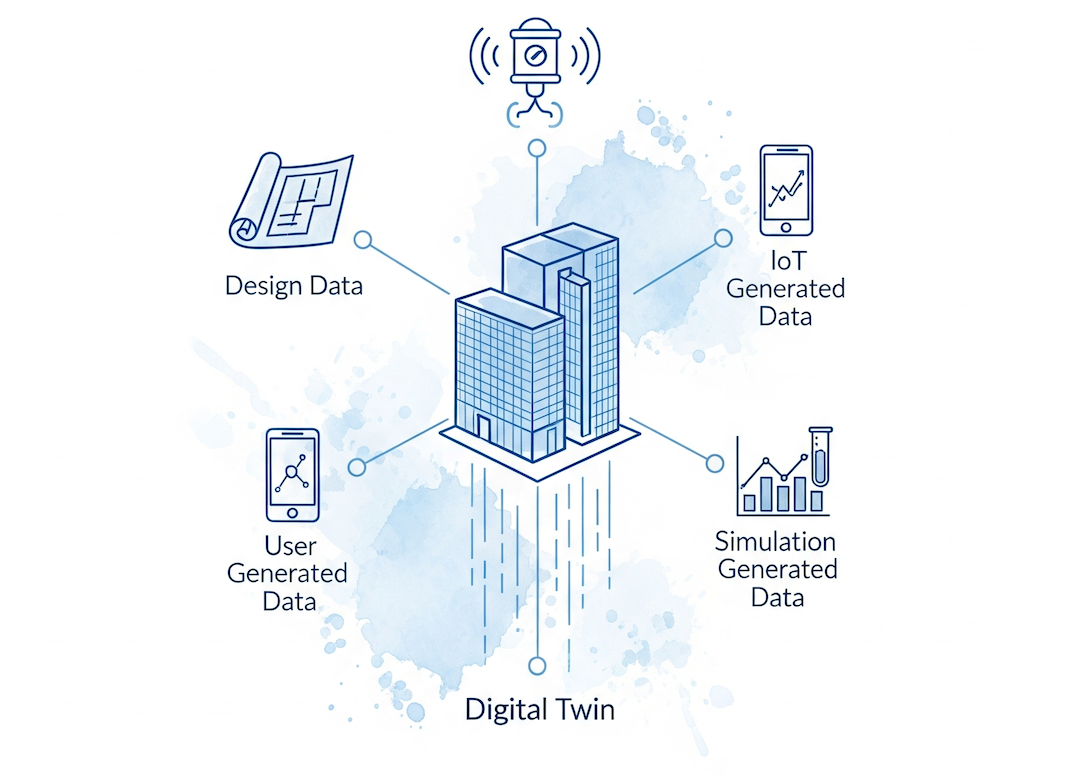When we talk about a Digital Twin, one thing is certain: data is the beating heart of the entire system. The strength of a digital twin lies precisely in its ability to generate, collect, and transform a huge amount of data from both the physical and virtual worlds.
But first, let’s clarify: what do we mean by “data”?
According to the Treccani dictionary, data is “that which is immediately present to knowledge, before any form of processing.” In the context of the Digital Twin, therefore, data is raw information generated by sensors, software, or people – before it is processed or interpreted.
When data is collected, connected, and analyzed, it becomes information, i.e., structured content useful for decision-making. And this is where the Digital Twin makes the difference: it allows us to move from scattered data to a coherent and powerful information system.
In the world of BIM-based Digital Twins, we can identify four main categories of data:
- 📐 Design data
These are static data, created during the design and construction phases of a building. Examples include dimensions, materials, and technical characteristics. They remain constant over time and are difficult (and costly) to modify, as any change would also require interventions in the physical environment. - 📡 IoT-generated data
Here, the time factor comes into play: this data is dynamic, generated in real time by connected sensors and devices. If not recorded at the right moment, it is lost forever. This category includes temperatures, consumption, occupancy, operating status of systems, etc. - 🧑🔧 User-generated data
In this case, people are the source of the data. Whether it’s notes, site reports, or manual updates, this data is valuable but fragile: it can be lost or inaccurate if not collected with appropriate tools. Therefore, it is essential to have simple and accessible systems, even on mobile, to allow users to input data wherever they are. - 🧪 Simulation-generated data
These are repeatable data that we can generate multiple times from a mathematical model. However, creating reliable simulations requires well-calibrated and realistic models. Additionally, all inputs feeding the simulation must be precisely defined, which is often far from simple.
Successfully collecting, organizing, and using this data correctly is the key to making a Digital Twin truly work – and to turning a set of numbers… into intelligent decisions.




